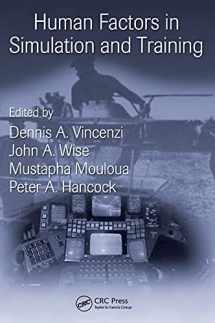
Human Factors in Simulation and Training
Book details
Summary
Description
Measure twice, cut once. Although applicable to all areas of human factors research, the old adage is especially relevant to simulation and training. As a tool, simulation is an aid to the imagination, however, if incorrectly or inadequately used, it can lead to inaccurate outcomes that not only limit the possibilities but potentially cause harm. A comprehensive overview of the topic from a human factor perspective, Human Factors in Simulation and Training not only reflects the state-of-the art but also integrates the literature on simulation into a cohesive resource.
The editors have collected chapters on a wide variety of topics, beginning with theory and application in areas ranging from traditional training to augmented reality to virtual reality. This coverage includes surface ships, submarines, naval aviation, commercial aviation, space, and medicine. The theory based section focuses on human factors aspects of simulation and training ranging from the history of simulators and training devices, to future trends in simulation from both a civilian and military perspective. The chapters expand on concepts regarding simulator usage particularly with respect to the validity and functionality of simulators as training devices. They contain in depth discussions of specific issues including fidelity, interfaces and control devices, transfer of training, simulator sickness, effects of motion in simulated systems, and virtual reality.
As more, and more sophisticated, simulation tools and training technologies become available, a complete understanding of how to use them appropriately will be even more crucial. Elucidating theory and application, the book addresses numerous issues and concepts pertaining to human factors in simulation and training, making this volume an important addition to the bookshelf of any human factors professional.


We would LOVE it if you could help us and other readers by reviewing the book
Book review



